Are you dreaming of experiencing authentic Japanese culture beyond the typical tourist trail? If you’re fascinated by traditional Japanese crafts and want to dive deep into Kyoto’s artistic heritage, let me share my incredible solo journey through the ancient capital’s most captivating cultural attractions.
- Why Choose Kyoto for Your Traditional Arts Adventure?
- Planning Your Kyoto Cultural Journey: What You Need to Know
- Kyoto Shibori Dyeing Museum – Discovering Japan’s Ancient Tie-Dye Art
- Hands-On Kyo-Yuzen Dyeing at Marumasu Nishimuraya
- Kanzashi Exhibition at Hosomi Museum (No longer publicly available)
- Shopping for Authentic Souvenirs in Gion District
- Practical Survival Guide for Your Kyoto Arts Adventure
- Making Your Trip More Than Just Tourism
- Final Thoughts: Why This Journey Matters
Why Choose Kyoto for Your Traditional Arts Adventure?
Kyoto isn’t just another beautiful Japanese city – it’s the beating heart of traditional Japanese craftsmanship. During my recent two-day solo trip, I discovered why this UNESCO World Heritage city continues to enchant visitors from around the globe. Unlike my hometown Fukuoka, which primarily attracts Asian tourists, Kyoto draws culture enthusiasts from every continent, creating an incredibly diverse and inspiring atmosphere.
What makes Kyoto special for arts lovers:
- Home to centuries-old craft traditions still practiced today
- Museums and workshops where you can see masters at work
- Hands-on experiences that let you try traditional techniques yourself
- Perfect blend of historical preservation and living culture
Planning Your Kyoto Cultural Journey: What You Need to Know
The Challenge: Planning a meaningful cultural trip can feel overwhelming with so many options
The Solution: Focus on specific traditional arts that interest you most
Your Action Plan: Book workshops in advance and allow plenty of time for each experience
Essential Pre-Trip Tips
- Best time to visit: Avoid summer if possible (Kyoto’s heat is intense!)
- Booking strategy: Reserve hands-on workshops ahead of time
- Budget planning: Traditional craft experiences range from ¥1,000-¥5,000
- Physical preparation: Expect lots of walking on uneven temple paths
Kyoto Shibori Dyeing Museum – Discovering Japan’s Ancient Tie-Dye Art
What Is Shibori and Why Should You Care?
Shibori is Japan’s traditional resist-dyeing technique – think of it as the sophisticated ancestor of tie-dye. But don’t let that comparison fool you; this craft requires incredible skill and patience. ( Kyoto Shibori Dyeing Museum)
The eye-opening reality: Master artisans earn only about 500 yen (roughly $3.50) per hour for work that takes incredible precision and years to perfect. This puts the true value of handcrafted textiles into perspective.
The Museum Experience That Changed My Understanding
The Kyoto Shibori Dyeing Museum offers something magical – the chance to see these techniques up close and understand the painstaking process behind each piece.
What you’ll discover:
- Educational video: Clear explanations of different shibori techniques
- Tool displays: See the actual implements used by craftspeople
- Fabric samples: Compare hand-stitched vs. machine-stitched work (the difference is astounding!)
- Interactive elements: Touch and examine wrapped fabric before dyeing
The shocking comparison: When you see hand-stitched Hikita shibori next to machine-stitched needle shibori, you’ll understand why handwork creates such tiny, precise dots that machines simply cannot replicate.
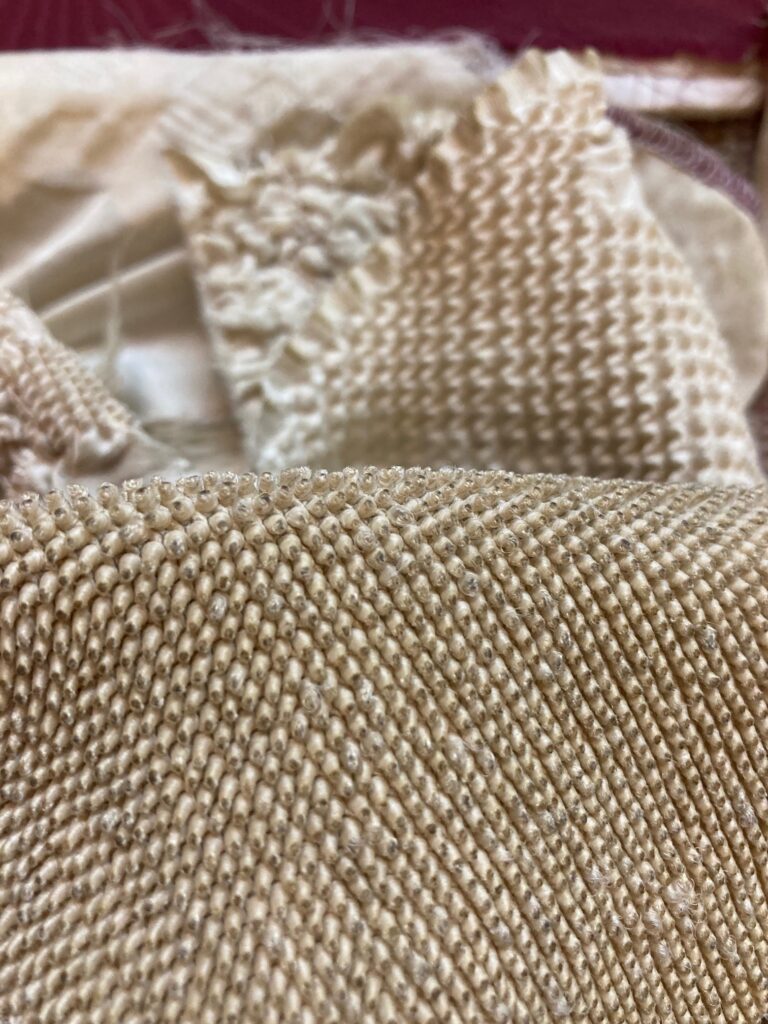
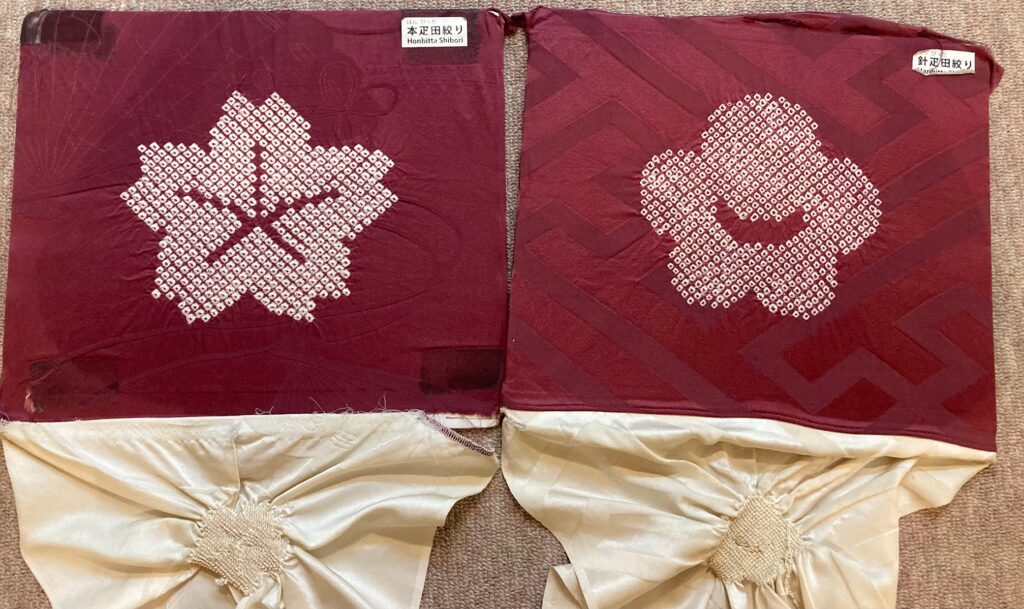
The Choju-giga Experience: Japan’s First Manga Comes to Life
Here’s where the museum completely surprised me. They display Choju-giga – often called Japan’s oldest manga – created through shibori techniques.
Why this matters:
- Historical significance: These scrolls represent early Japanese storytelling art
- Modern relevance: You’ll see how ancient techniques adapt to contemporary themes
- Olympic special edition: A 40-meter scroll featuring animals doing Olympic sports, created by 50 artisans over 2 years and 3 months
The bilingual explanations (Japanese and English) make this accessible to international visitors, and watching animated animals doing bouldering and wrestling in traditional art style is absolutely delightful!
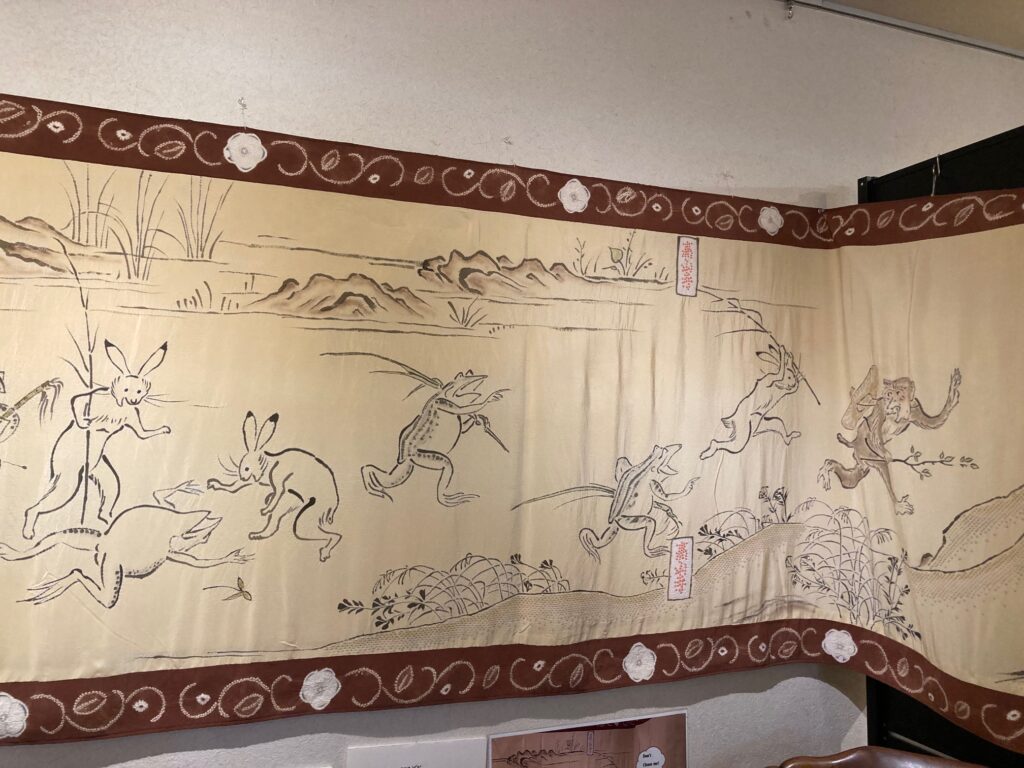
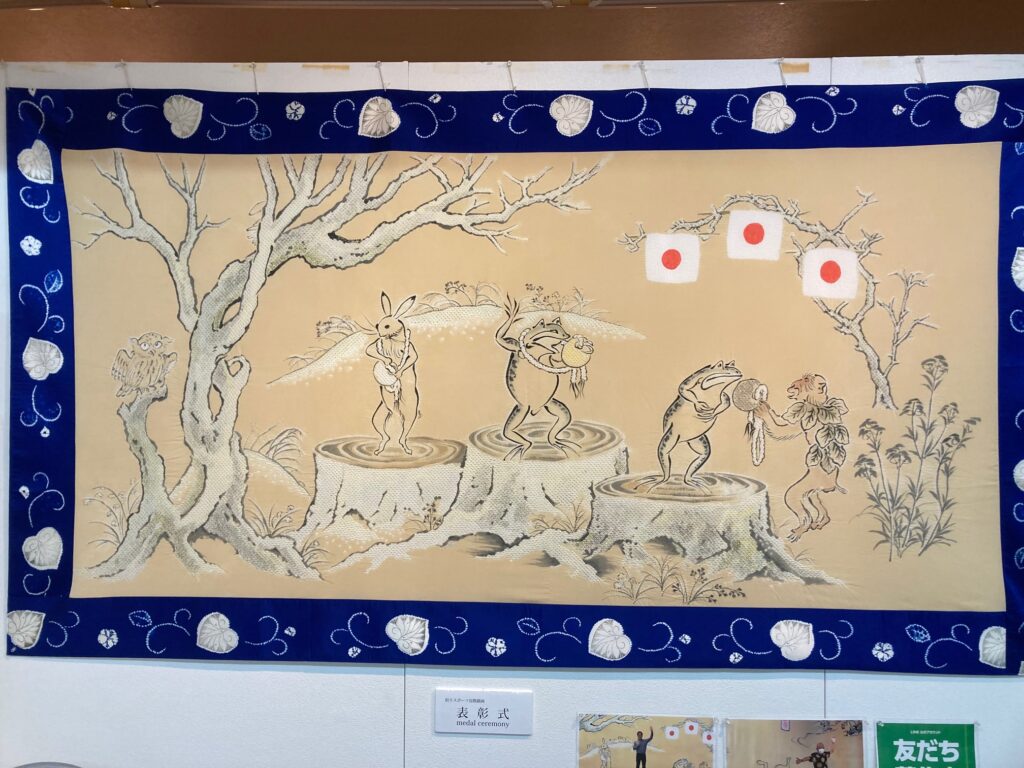
↑Olympic version
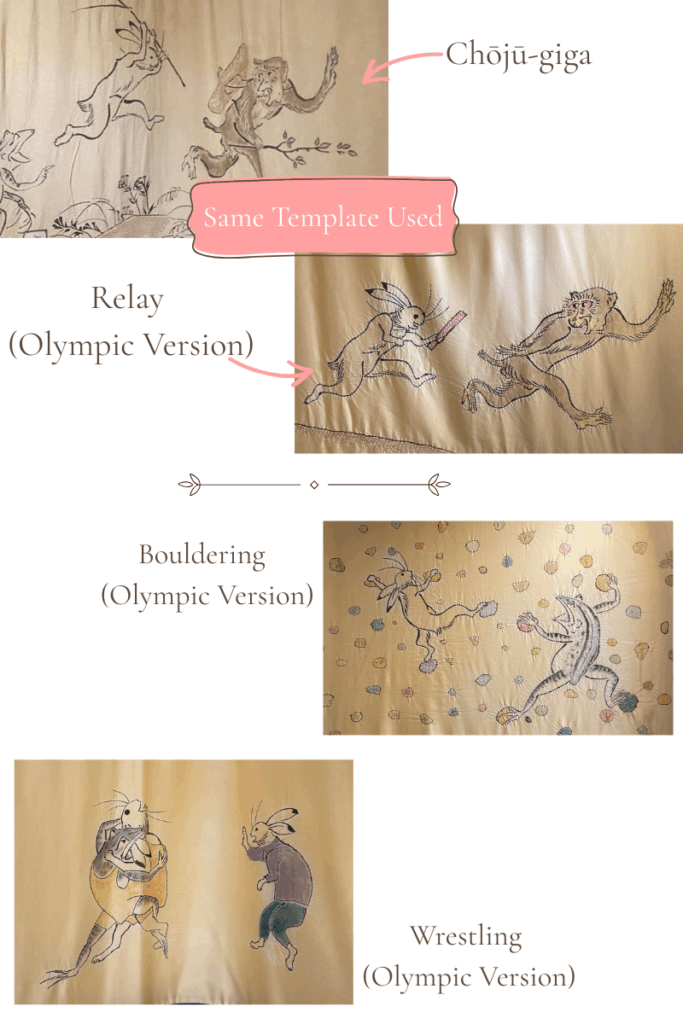
Hands-On Kyo-Yuzen Dyeing at Marumasu Nishimuraya
Transform from Observer to Creator
After appreciating shibori as an observer, I was ready to get my hands dirty with Kyo-Yuzen dyeing – Kyoto’s famous decorative dyeing technique.
(Marumasu Nishimuraya)
What makes Kyo-Yuzen special:
- Uses stencils and brushes to create intricate patterns
- Allows for multiple color layering
- Perfect for beginners but with professional-quality results
- Complete creative freedom in color mixing
Your Step-by-Step Workshop Experience
What to expect during your 2-hour session:
- Item selection: Choose from drawstring pouches, handkerchiefs, or other fabric items
- Stencil browsing: Select from dozens of traditional Japanese patterns
- Color planning: Use pre-mixed colors or create your own blends
- Application technique: Learn proper brushing methods from expert staff
- Independent creation: Work at your own pace with occasional guidance
- Final touches: Add as many stencil layers as desired
Pro tip: Don’t worry about perfection – even if one side gets “cluttered” like mine did, the imperfections add character and make it uniquely yours!
Time investment: Plan for 2 hours minimum, but the satisfaction lasts forever.
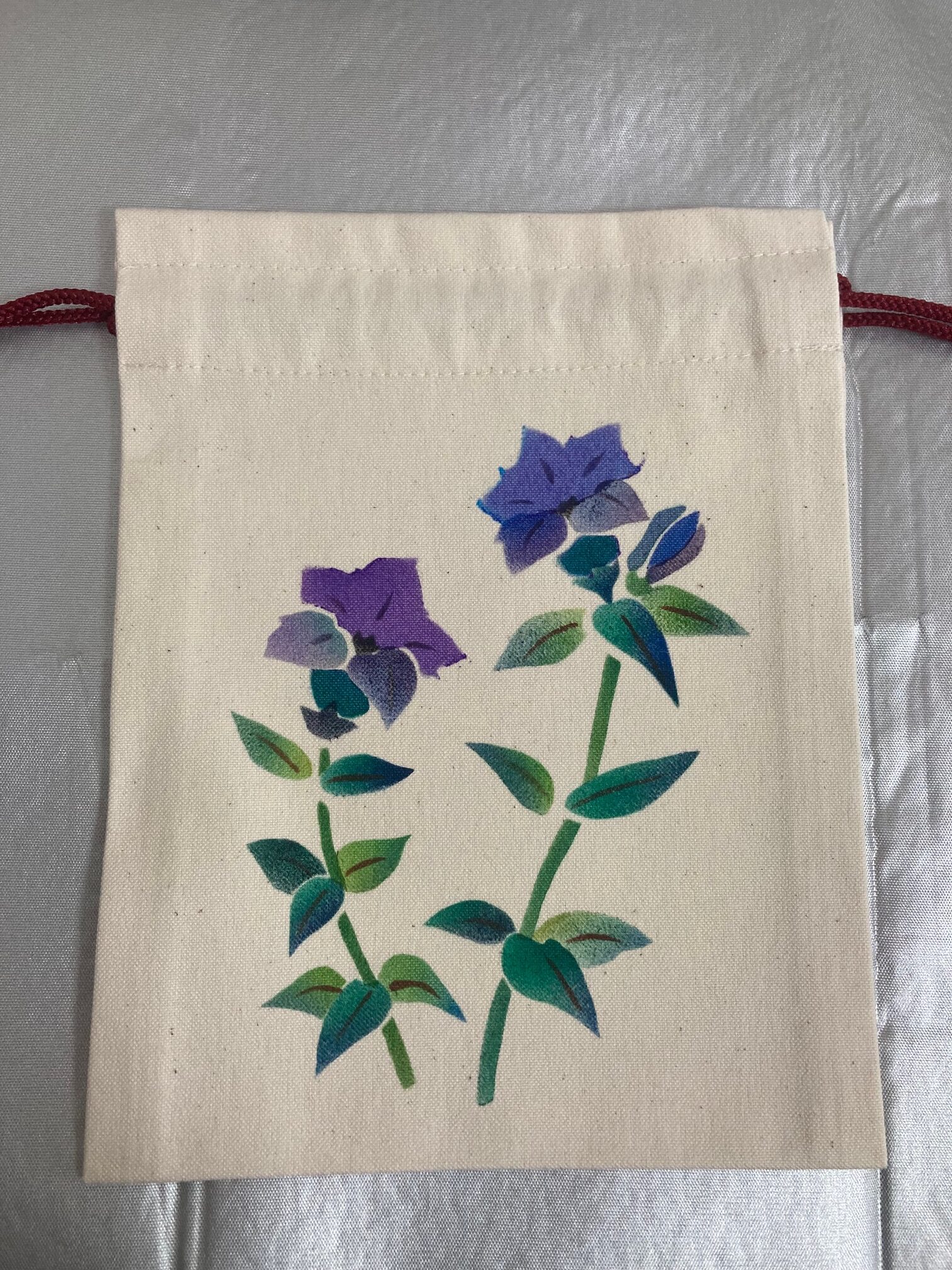
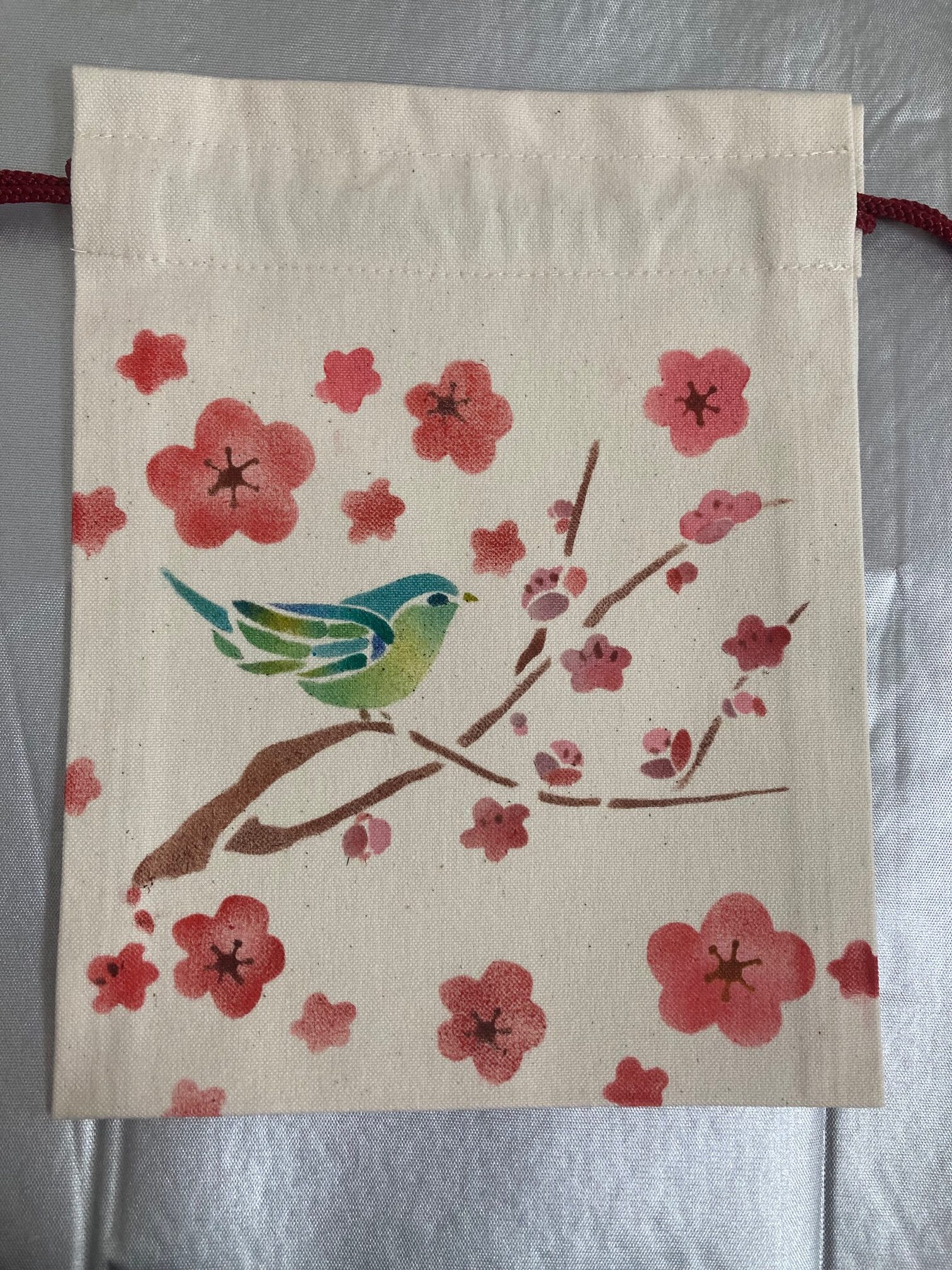
Kanzashi Exhibition at Hosomi Museum (No longer publicly available)
Understanding Kanzashi: More Than Pretty Hair Accessories
Kanzashi are traditional Japanese hairpins, but calling them “hair accessories” is like calling a Stradivarius violin “a musical instrument.” These are works of art with deep cultural meaning.
What makes kanzashi culturally significant:
- Seasonal symbolism: Different designs for different times of year
- Social status indicators: Styles varied by marital status and social position
- Artistic mastery: Each piece represents hours of meticulous handcraft
- Historical storytelling: Designs often carry symbolic meanings
Exhibition Highlights
Crystal Kanzashi for Summer: The cool, refreshing appearance isn’t just beautiful – it’s designed to psychologically help the wearer feel cooler during hot summer months.
Bridal Birdcage Kanzashi (Birabira Kanzashi): These intricate pieces feature tiny nightingales inside birdcage designs, symbolizing the bride being cherished and protected by her new family. The symbolism is both beautiful and deeply meaningful.
Beni-ita (Lipstick Storage): Small lacquered boards used for storing traditional lip color – proof that beauty tools have always been both functional and elegant.
Historical Context: The exhibition includes reconstructed hairstyles showing how different groups (unmarried women, married women, even mistresses) wore their hair and kanzashi. It’s a fascinating glimpse into social history through personal adornment.
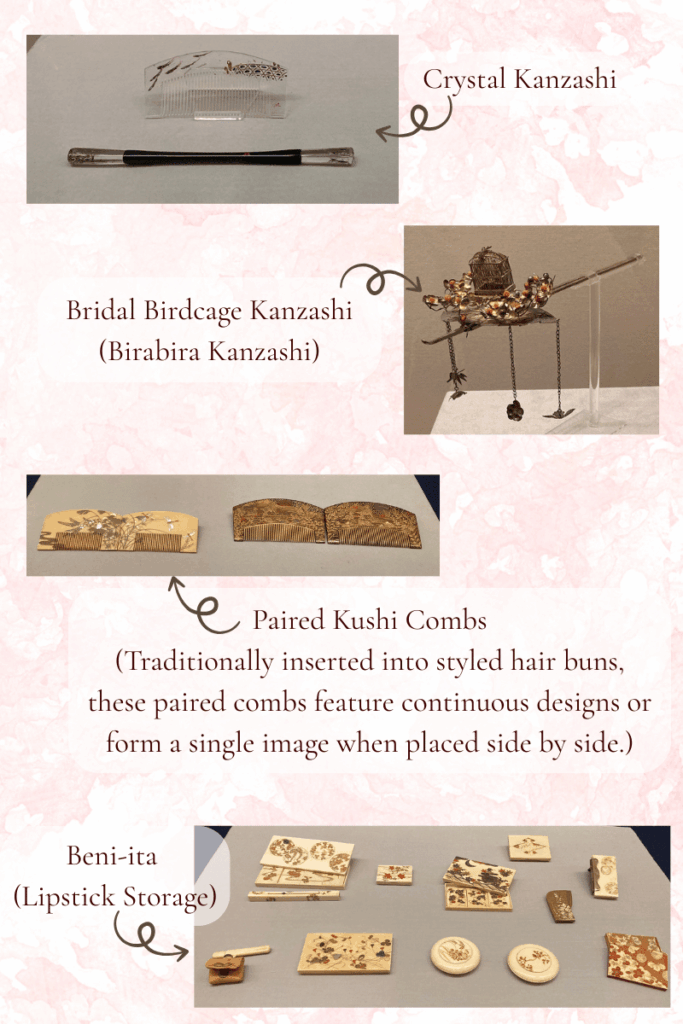
Why This Exhibition Is Unmissable
Most pieces come from Tokyo’s Kanzashi Museum, which is currently closed. This makes the Hosomi Museum exhibition a rare opportunity to see these treasures up close.
Important note: Summer exhibitions in Kyoto require serious heat preparation, but the cultural payoff is worth every drop of sweat!
Shopping for Authentic Souvenirs in Gion District
Beyond Tourist Trinkets: Finding Real Cultural Treasures
After immersing yourself in traditional arts, you’ll have a much better eye for authentic pieces versus tourist souvenirs.
Recommended stops:
- Sanbi-do: Specializes in kimono accessories perfect for souvenirs
- Local craft shops: Look for half-collars (han-eri), obi-age, and obi-jime
- Artisan studios: Many offer direct-from-maker purchases
Shopping strategy: Buy something that connects to your workshop experience – it becomes a personal reminder of your hands-on learning.
Practical Survival Guide for Your Kyoto Arts Adventure
Physical Preparation (This Is Real!)
Warning from experience: I walked so much that I had muscle pain for the first time in decades outside of intentional exercise. Kyoto’s cultural sites require serious walking on uneven surfaces.
Heat management tips:
- Hydration: Carry water constantly – I was drenched in sweat after just 10 minutes
- Timing: Start early morning, take midday breaks
- Clothing: Light, breathable fabrics and comfortable walking shoes
- Realistic planning: Don’t overpack your schedule
Cultural Etiquette for Workshop Visits
Workshop behavior:
- Arrive 5 minutes early to settle in
- Ask before taking photos of other participants’ work
- Listen carefully to instructions – safety first with dyes and tools
- Clean up your workspace thoroughly
Making Your Trip More Than Just Tourism
The Deeper Cultural Connection
This wasn’t just sightseeing – it was cultural education that changed my perspective on Japanese craftsmanship. Understanding the time, skill, and economic realities behind traditional arts makes you appreciate both the beauty and the dedication of the artisans.
What you’ll gain beyond pretty photos:
- Historical context: How these arts fit into Japanese cultural development
- Technical appreciation: Understanding what makes something truly masterful
- Economic awareness: The challenges facing traditional craftspeople today
- Personal connection: Hands-on experience creates lasting memories
Final Thoughts: Why This Journey Matters
In our digital age, experiencing traditional crafts isn’t just cultural tourism – it’s connecting with human creativity that spans centuries. Every brush stroke in Kyo-Yuzen, every stitch in shibori, every curve in kanzashi represents knowledge passed from master to student across generations.
My solo Kyoto adventure taught me that the best cultural experiences happen when you move beyond passive observation to active participation. Whether you’re trying your hand at dyeing techniques or simply taking time to truly understand what you’re seeing in museums, engaging deeply with traditional arts creates memories and insights that last far beyond your trip.
Ready to plan your own Kyoto cultural adventure? Start by choosing one traditional art that truly interests you, book a hands-on workshop, and prepare for heat, walking, and wonder. The ancient capital is waiting to share its secrets with you.
Have you experienced traditional Japanese arts in Kyoto or elsewhere? Share your favorite cultural discoveries in the comments below – I’d love to hear about your adventures and recommendations for fellow culture enthusiasts!




コメント